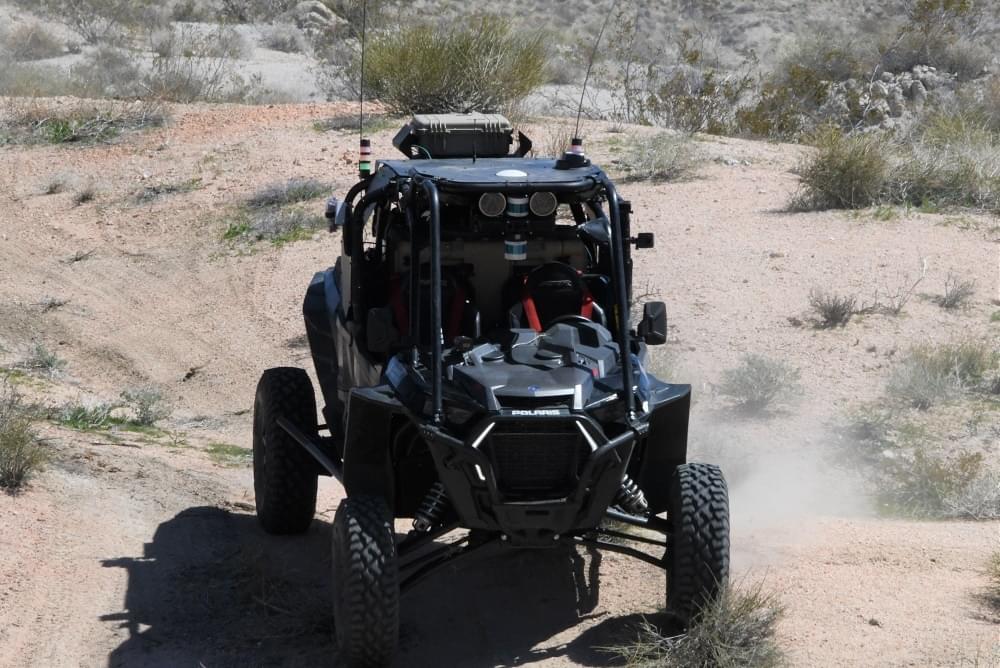U.S. DARPA’s Robotic Autonomy in Complex Environments with Resiliency (RACER) program recently conducted its third experiment to assess the performance of off-road unmanned vehicles. These test runs, conducted March 12–27, included the first with completely uninhabited RACER Fleet Vehicles (RFVs), with a safety operator overseeing in a supporting chase vehicle. The goal of the RACER program is to demonstrate autonomous movement of combat-scale vehicles in complex, mission-relevant off-road environments that are significantly more unpredictable than on-road conditions. The multiple courses were in the challenging and unforgiving terrain of the Mojave Desert at the U.S. Army’s National Training Center (NTC) in Ft. Irwin, California. As at the previous events, teams from Carnegie Mellon University, NASA’s Jet Propulsion Laboratory, and the University of Washington participated. This completed the project’s first phase.
“We provided the performers RACER fleet vehicles with common performance, sensing, and compute. This enables us to evaluate the performance of the performer team autonomy software in similar environments and compare it to human performance,” said Young. “During this latest experiment, we continued to push vehicle limits in perceiving the environments to greater distances, enabling further increase in speeds and better adaptation to newly encountered environmental conditions that will continue into RACER’s next phase.”
“At Experiment Three, we successfully demonstrated significant improvements in our off-road speeds while simultaneously reducing any interaction with the vehicle during test runs. We were also honored to have representatives from the Army and Marine Corps at the experiment to facilitate transition of technologies developed in RACER to future service unmanned initiatives and concepts,” said Stuart Young, RACER program manager in DARPA’s Tactical Technology Office.










Comments are closed.